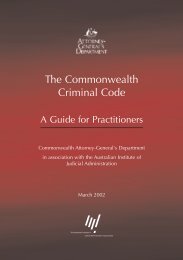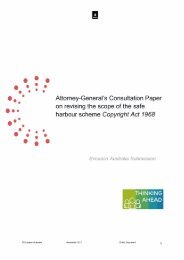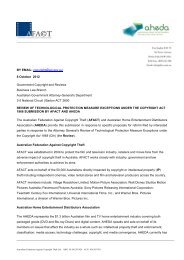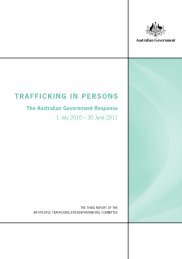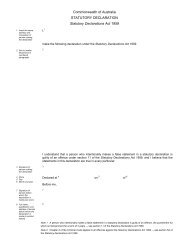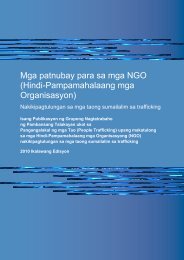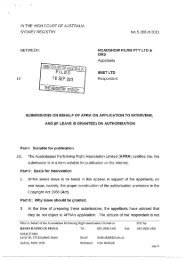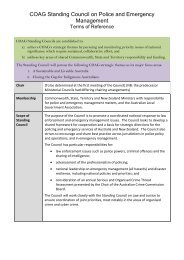Normann Witzleb [PDF 657KB] - Attorney-General's Department
Normann Witzleb [PDF 657KB] - Attorney-General's Department
Normann Witzleb [PDF 657KB] - Attorney-General's Department
You also want an ePaper? Increase the reach of your titles
YUMPU automatically turns print PDFs into web optimized ePapers that Google loves.
will be the result of a process of intense community consultation. In the inquiry leading<br />
to the publication of its landmark report ‘For Your Information: Australian Privacy Law<br />
and Practice’ (ALRC Report 108), the ALRC engaged in one of the largest community<br />
consultation programs in its history. The New South Wales Law Reform Commission and<br />
the Victorian Law Reform Commission based their findings similarly on input from a<br />
wide cross-section of the community.<br />
9 The fact that law reform inquiries at federal level as well as in Australia’s two most<br />
populous states reached a consensus on the appropriate way forward suggests that the<br />
issue is now ripe for decision. The federal Government should accept the general thrust<br />
of the proposals of the Law Reform Commissions and implement a statutory cause of<br />
action.<br />
10 The variations between the proposals in relation to scope and content are relatively<br />
minor. My submission below to the further questions in the Issues paper explains how I<br />
consider the proposed statutory cause of action should be formulated.<br />
4. Is ‘highly offensive’ an appropriate standard for a cause of action<br />
relating to serious invasions of privacy?<br />
The proposals<br />
11 There are differences between the proposals of the three Law Reform Commissions<br />
in relation to the threshold at which a privacy invasion becomes actionable. Both the<br />
ALRC and the VLRC recommend that only ‘serious’ invasions of privacy should be<br />
actionable. 9 To that aim, their proposals contain a two-pronged test of actionability<br />
requiring that in the circumstances –<br />
<br />
<br />
there is a reasonable expectation; and<br />
the act or conduct complained of is highly offensive to a reasonable person of<br />
ordinary sensibilities. 10<br />
12 The second of these criteria is intended to create an ‘objective test of seriousness’. 11<br />
The ‘highly offensive’ criterion has originated in the US 12 but has been accepted by<br />
Gleeson CJ in Lenah Game Meats Pty Ltd v Australian Broadcasting Corporations as a<br />
‘useful practical test of what is private’. 13 While the ALRC Discussion Paper expressed<br />
9 ALRC Report, Rec 74-1; VLRC Report, Rec 23 and 24.<br />
10 This is the formulation in the ALRC Report, Rec 74-1; with almost identical wording, but in relation to<br />
each proposed cause action, see also VLRC Report, Rec 25 and 26.<br />
11 ALRC Report, at [74.133].<br />
12 See Restatement (Second) of the Law of Torts, 625D.<br />
13 Lenah Game Meats Pty Ltd v Australian Broadcasting Corporations (2001) 208 CLR 199; [2001] HCA 63,<br />
at [42]. The reception of this test in the UK has been largely critical: in Campbell v MGN Ltd [2004] 2 AC<br />
457; [2004] UKHL 22, Baroness Hale and Lord Nicholls were critical, while Lord Hope approved of its use<br />
‘in cases where there is room for doubt’ (at [94]); Douglas v Hello! Ltd (No. 3) [2003] 3 All ER 996; [2003]<br />
EWHC 786 (Ch), [189]-*192+ (Lindsay J); Gavin Phillipson, ‘Transforming Breach of Confidence? Towards a<br />
5


![Normann Witzleb [PDF 657KB] - Attorney-General's Department](https://img.yumpu.com/26247895/5/500x640/normann-witzleb-pdf-657kb-attorney-generals-department.jpg)

